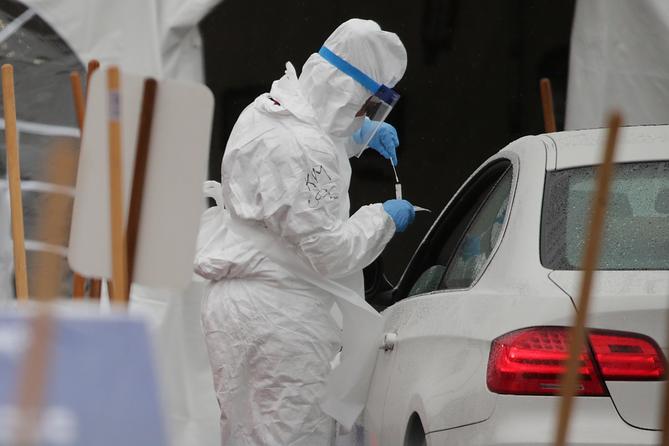Spotlight PA is an independent, nonpartisan newsroom powered by The Philadelphia Inquirer in partnership with the Pittsburgh Post-Gazette and PennLive/Patriot-News. Sign up for our free weekly newsletter.
HARRISBURG — As cities begin to report alarming racial disparities in coronavirus cases, Pennsylvania’s top health official said the state is facing challenges collecting that information, but will release it at some point.
Health Secretary Rachel Levine said Tuesday “health care systems don’t tend to put in racial data” about COVID-19 cases, a “limitation” that has hampered collection efforts.
“But we are looking at different ways that we might get that information, and when we have that information we will release it,” she said at a news briefing.
Nate Wardle, a spokesperson for the state Department of Health, said the labs responsible for reporting cases receive limited information from physicians, which often might not include race or ethnicity.
Last week, health officials in Philadelphia released racial data for less than a third of the city’s cases. While most early cases were among white patients, new cases overwhelmingly affected black residents, raising fears the virus will compound existing inequities in employment, housing, and health.
While state officials have not released municipality-level data, Philadelphia health officials broke down cases by zip code. Nearly every zip code where at least 30% of patient tests were positive are majority-minority communities, the data showed.
Other cities and states — such as Chicago, Louisiana, and Maryland — have seen more people of color impacted by COVID-19, even after those numbers are adjusted to the states’ particular demographics. In Michigan, black patients have accounted for 40% of deaths despite African Americans making up only 14% of the total state population, according to ProPublica.
The president of the American Medical Association, Patrice Harris, on Tuesday called on health practitioners to collect race and ethnicity details from patients “to make sure we have a thorough understanding of the pandemic’s impact on every community.”
Experts say demographic data is vital in the early stages of a public health crisis, because it informs government entities on where to allocate resources.
“If we don’t have data that’s linked to race, that’s linked to economics, that’s linked to geography, we won’t know where to really direct resources and what the structural drivers are,” said Sharrelle Barber, an assistant research professor of epidemiology and biostatistics at Drexel University.
Barber said the disproportionate impact in black and brown neighborhoods can be attributed to structural inequities, including lower access to quality health care. She also said communities that have experienced disinvestment are more likely to be made up of service industry workers who have customer-facing jobs.
Pennsylvania state Rep. Jake Wheatley (D., Allegheny) is working on a bill that would require health and human services agencies to work with doctors and labs to collect better data.
“These underserved neighborhoods were impacted greatly before the pandemic, and if they are being impacted more than other communities, our response should be similar,” Wheatley said Tuesday. “We should be crafting policies to help those who are most impacted and use data to think about how we will provide relief and recovery.”
Health care professionals and advocates are also concerned that information isn’t reaching vulnerable communities.
Dr. Kathy Reeves, senior associate dean of Health Equity, Diversity, and Inclusion at Temple University’s Lewis Katz School of Medicine, said in late March she and her colleagues had seen a “preponderance of COVID folks that were Hispanic.”
“We have probably one of the highest concentrations of Latinx individuals,” Reeves said of the community in north Philadelphia she serves.
Her team started a media campaign to reach people who are not proficient in English after noticing that most information released by health officials was not translated into Spanish.
Rosamaria Cristello, president of Pittsburgh-based Latino Community Center, said people who do not speak English have faced issues getting accurate information and preparing for the pandemic.
“While everyone else who understands English was able to go to stores and get supplies ready, our families were not,” she said in early April. “I started getting texts and calls from families saying that there was no toilet paper. We had about 30 families that were in urgent need of food. … It’s that lag time in receiving that information that everyone else gets in English that has serious consequences.”
Wheatley said many people in communities of color rely on word of mouth to get information, which has been severely limited since the statewide stay-at-home order was implemented.
“A lot of folk in these communities are not connected on social media and are not paying attention to the news, so I am concerned about the transmission of information and how that’s being handled now that we are limiting person to person contact,” Wheatley said.
100% ESSENTIAL: Spotlight PA provides its journalism at no cost to newsrooms across the state as a public good to keep our communities informed and thriving. If you value this service, please give a gift today at spotlightpa.org/donate.

